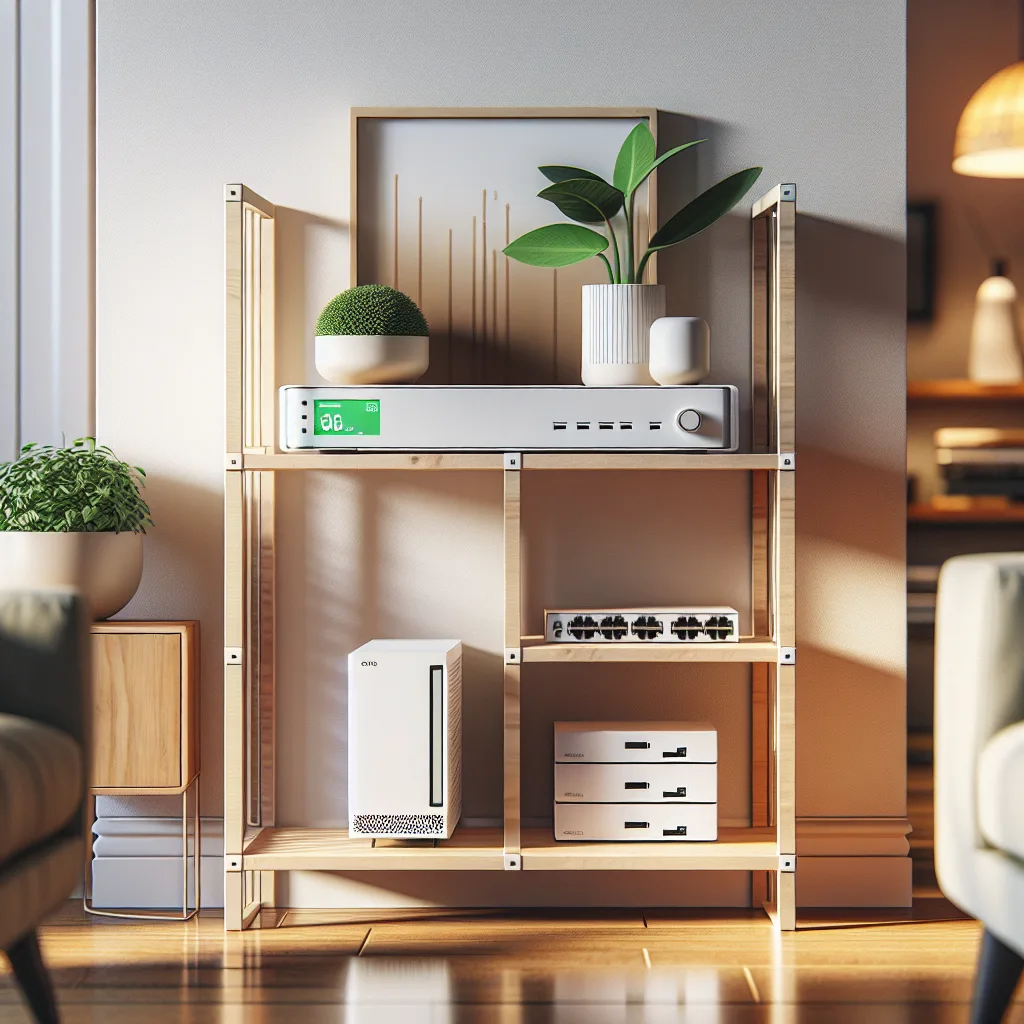Forget the messy server rack in the basement. Here’s how to build a quiet, clean, and beautiful home lab setup that fits right into your living space.
I’ve always been a tech person, but I’ve never loved the look of tech. You know what I mean. The blinking lights, the tangled mess of black cables, the big, beige boxes. For years, I thought having a powerful home server meant sacrificing a corner of my home to a noisy, dusty altar of wires. But then I saw a setup that changed my mind, and it sent me down a rabbit hole of creating a home lab setup that was not only functional but actually looked good.
It turns out, you don’t need a dedicated server rack in your basement to run your own cloud storage, media server, or smart home hub. You can build something powerful, quiet, and beautiful enough to sit in your living room.
Why Bother with an Aesthetic Home Lab Setup?
So, why put in the extra effort to make it look nice? For me, it comes down to a simple idea: I want to enjoy the space I live in. My tech projects are a part of my life, so why shouldn’t they be a part of my home in a way that feels intentional and clean?
When your server is tucked away on a shelf next to your books and a plant, it feels less like a utility and more like a curated piece of your home. It’s also a great conversation starter! But beyond the looks, a clean setup has practical benefits. When cables are tidy and components are organized, maintenance and upgrades are so much easier. There’s no more digging through a spaghetti monster of wires to figure out what goes where. A tidy setup is a happy setup.
The Core Components: Small and Mighty
You don’t need huge, power-hungry enterprise gear to have a capable home lab. The world of mini-PCs and efficient components has made it possible to build a powerful server that’s no bigger than a book.
My own journey led me to a few key pieces:
- The Brains: Instead of a giant tower, I opted for a small form factor (SFF) PC. Something like an Intel NUC, a Mac Mini, or a custom-built PC in a tiny case is perfect. They are surprisingly powerful, sip electricity, and are often whisper-quiet.
- The Storage: For media, backups, and files, a Network Attached Storage (NAS) device is a great choice. Companies like Synology or QNAP make fantastic, user-friendly devices. They are designed for home use, meaning they are quiet and look pretty sleek.
- The Network: A simple, unmanaged switch is usually all you need. You can find 5-port or 8-port switches that are tiny and can be easily hidden.
The key is choosing components that are low-power and have quiet cooling. I’m a huge fan of Noctua fans, which are famous in the PC building community for being incredibly effective and almost silent.
Tips for a Clean and Tidy Home Lab Setup
Ready to build your own? Here’s how you can create a home lab setup that doesn’t look like a mess.
- Choose the Right Furniture: Forget the metal rack. Think about furniture you’d actually want in your home. A cube shelf, like the famous KALLAX from IKEA, is a popular choice for a reason. The square compartments are perfectly sized for most home lab gear. A floating shelf or a small, modern cabinet can also work wonders.
- Master Your Cable Management: This is the most important step. Neat cables are the difference between a tech mess and a clean setup. Don’t just stuff them behind the shelf!
- Velcro Ties: Get a roll of velcro ties. They are reusable and much better than single-use plastic zip ties.
- Cable Sleeves: For bundles of cables running the same direction, a fabric cable sleeve can make them look like a single, neat tube.
- Plan Your Routes: Before you plug anything in, think about the path each cable will take. Run them along the back edges of furniture and use small, adhesive clips to keep them in place.
- Think About Airflow: Even quiet, low-power electronics generate heat. Make sure your setup has some room to breathe. Don’t cram your server into a completely enclosed cabinet without any ventilation. Leaving the back of a cube shelf open is often enough, but if you’re using a cabinet, you might consider drilling a few holes in the back panel and even installing a silent USB-powered fan to exhaust warm air.
It doesn’t take a ton of effort to create a space for your tech that feels calm and organized. My server now sits quietly in my living room, and honestly, I barely notice it’s there. It just works, and it lets me enjoy my home without clutter. And that’s a project I can get excited about.
